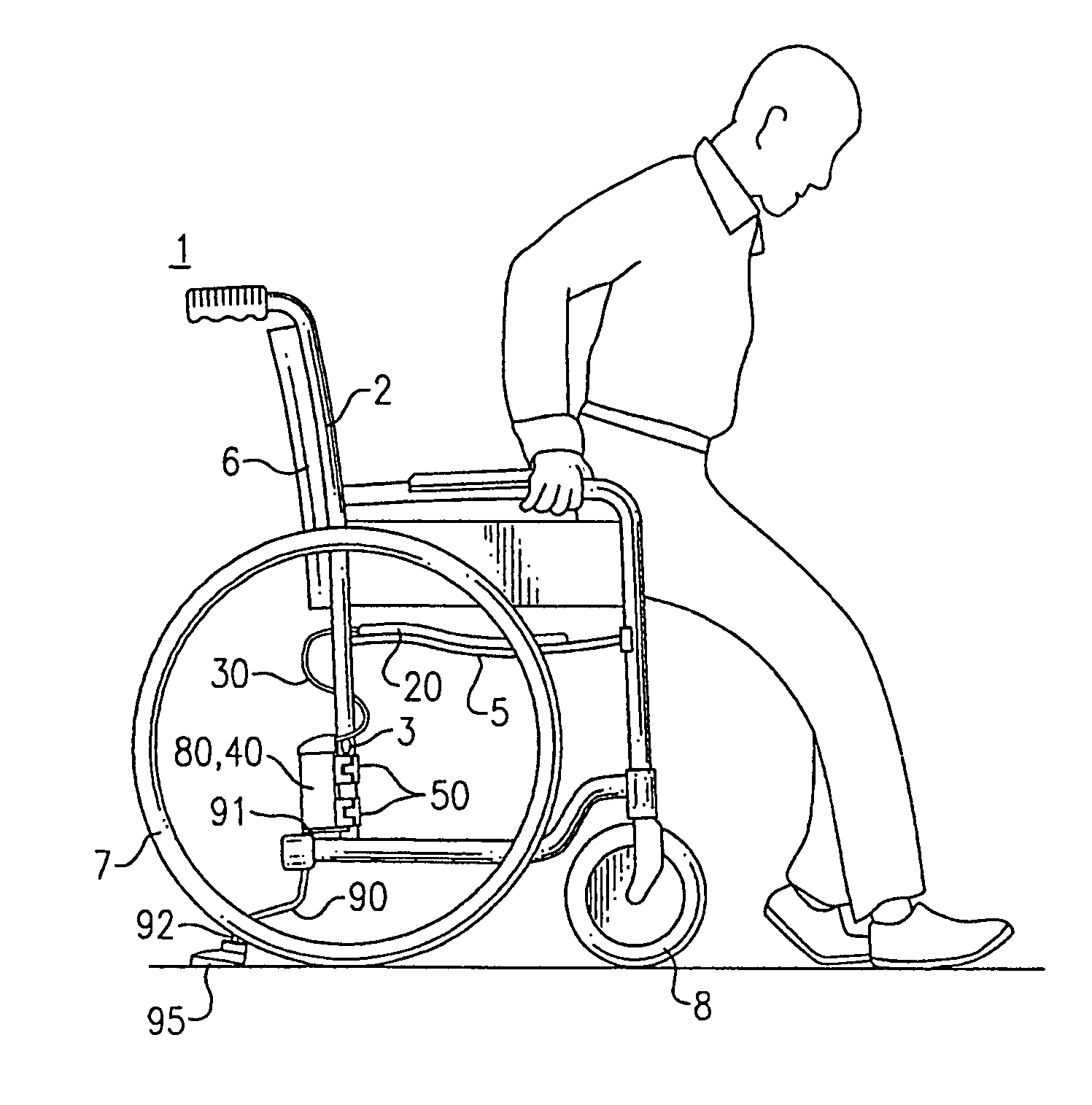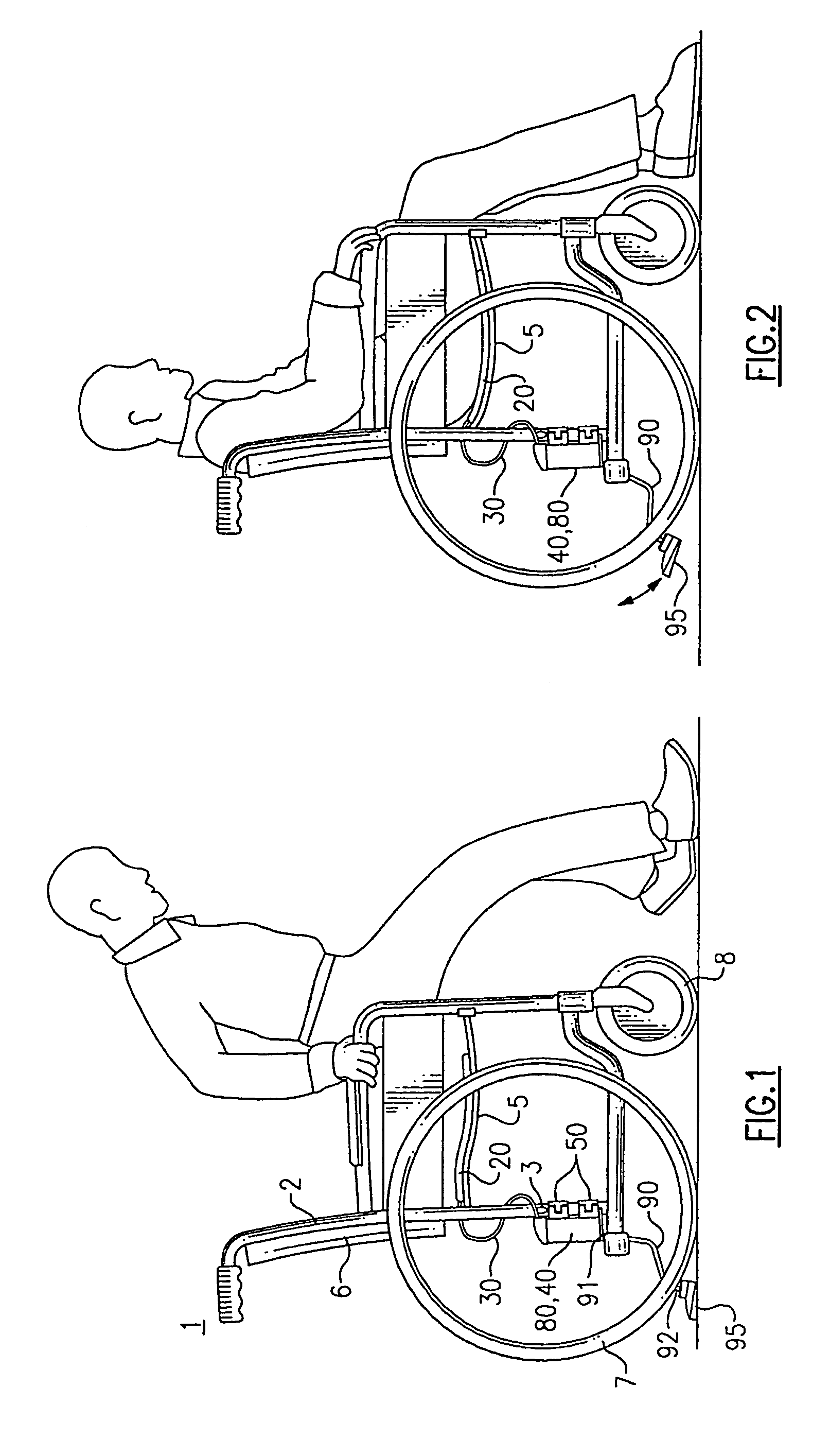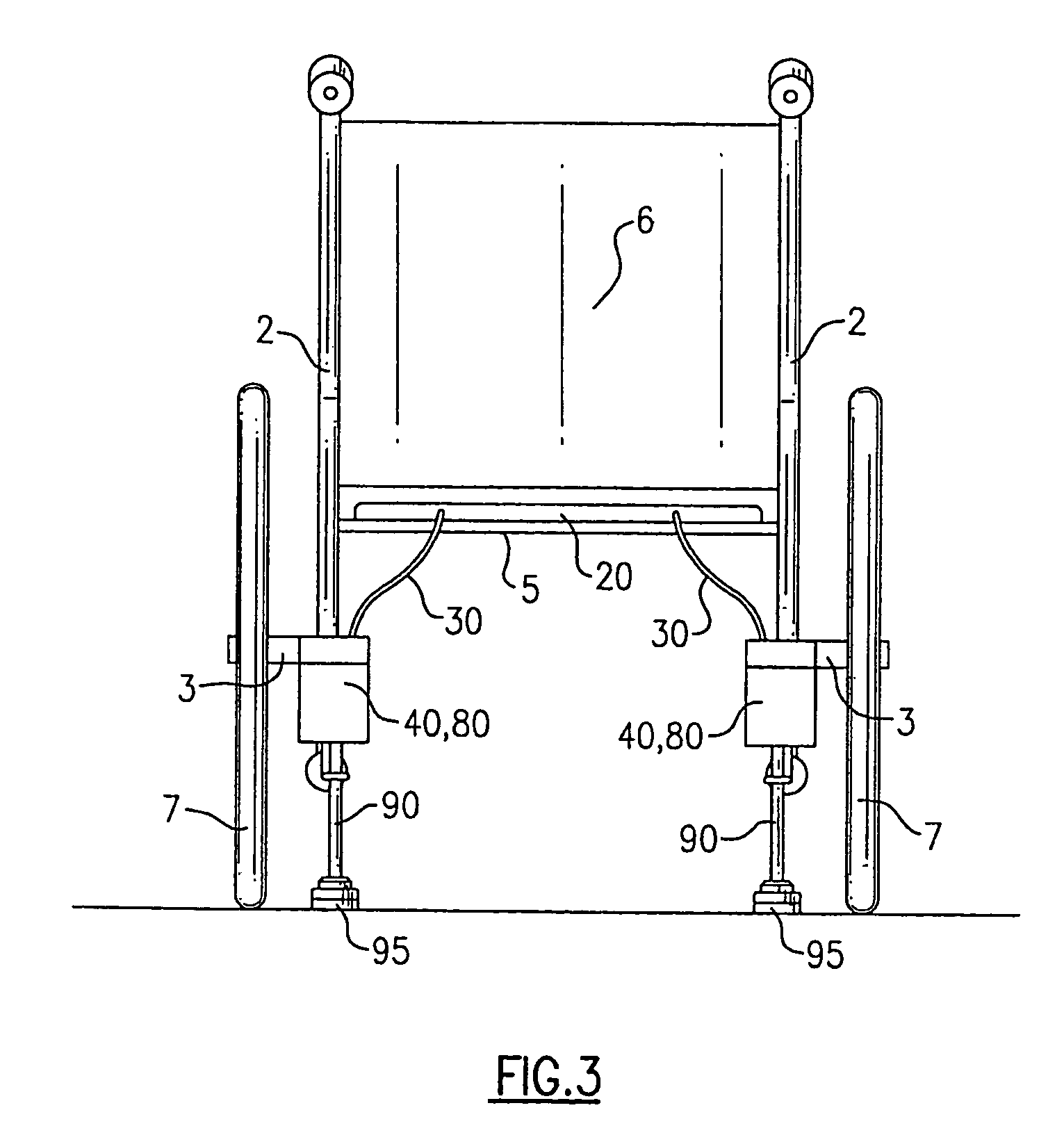Automatic wheelchair brake system and wheelchair including same
a brake system and automatic technology, applied in the direction of brake systems, wheelchairs/patient conveyance, transportation and packaging, etc., can solve the problems of insufficient manual brakes, patient is extremely vulnerable to falling injuries, and cannot be easily installed and operated, so as to facilitate easy folding and storage, facilitate easy installation, and facilitate the effect of convenient folding
- Summary
- Abstract
- Description
- Claims
- Application Information
AI Technical Summary
Benefits of technology
Problems solved by technology
Method used
Image
Examples
Embodiment Construction
[0055]FIG. 1 is a side view of a wheelchair and an engaged mode of a brake apparatus according to one embodiment of the present invention, specifically shown as an occupant attempts to sit on the seat member 5 of the wheelchair 1. The brake apparatus of this embodiment includes a compressible seat actuation member 20 positioned on the seat member 5, which is coupled with a brake actuating member 80 via a conduit 30 to comprise a closed fluid system. The brake actuating member 80 is housed within a connection mechanism 40, which is affixed to the wheelchair 1 at a rear portion of the frame 2 via integrated attachment members 50, 50 and vertically spaced a distance below the axle 3 of rear wheel 7.
[0056]The brake apparatus further includes a brake shaft member 90 extending downwardly from a first end 91 proximate the connection mechanism 40 toward an opposed second end 92. A friction member 95 is also included proximate the second end 92 of the brake shaft member 90, and positioned to...
PUM
 Login to View More
Login to View More Abstract
Description
Claims
Application Information
 Login to View More
Login to View More - R&D
- Intellectual Property
- Life Sciences
- Materials
- Tech Scout
- Unparalleled Data Quality
- Higher Quality Content
- 60% Fewer Hallucinations
Browse by: Latest US Patents, China's latest patents, Technical Efficacy Thesaurus, Application Domain, Technology Topic, Popular Technical Reports.
© 2025 PatSnap. All rights reserved.Legal|Privacy policy|Modern Slavery Act Transparency Statement|Sitemap|About US| Contact US: help@patsnap.com



